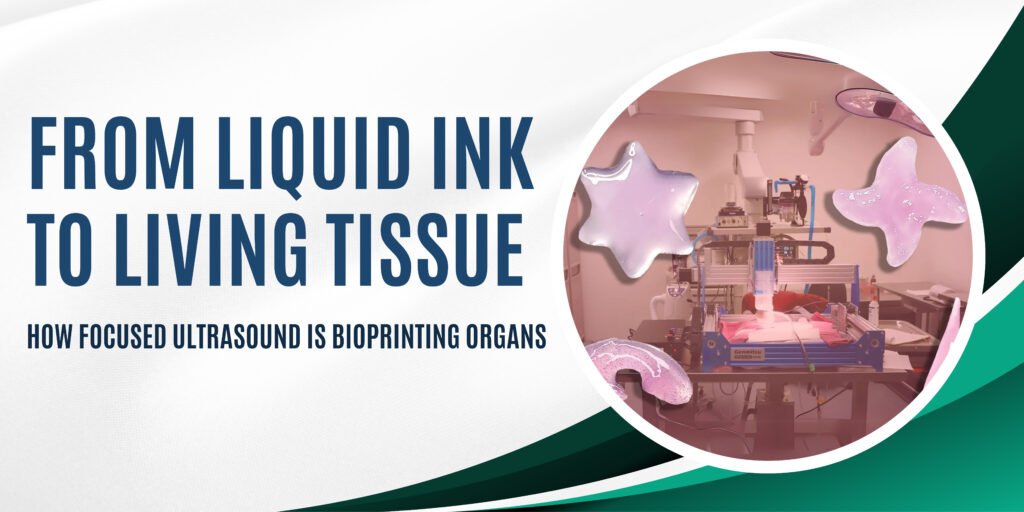From Liquid Ink to Living Tissue: How Focused Ultrasound Is Bioprinting Organs

Last Updated on June 27, 2025 by Julian Espinosa
Discover the future of medicine where surgeons trade scalpels for sound waves! Engineers at Caltech have unveiled a groundbreaking Deep Tissue In Vivo Sound Printing (DISP) platform—a method that uses focused ultrasound to “print” bioinks directly inside living tissue, all without a single incision.
After injecting a liquid ink packed with temperature‑sensitive liposomes, researchers guide a second, high‑frequency ultrasound beam to raise the local temperature by just a few degrees. This tiny heat spike bursts the liposomes, releases cross‑linkers, and transforms loose polymers—like alginate or gelatin—into stable hydrogels, right where they’re needed.
What makes DISP truly noteworthy is its precision and versatility. Real‑time ultrasound imaging, enhanced by gas‑vesicle nanostructures, lets scientists both see and steer the gelation process, carving intricate shapes—stars, teardrops, even pinwheels—with 150 µm resolution and speeds up to 40 mm/s.
Beyond playful demonstrations, the team loaded bioinks with doxorubicin to create a slow‑release chemotherapy depot in mouse bladders and printed scaffolds deep within rabbit leg muscle. Remarkably, these implanted gels caused no adverse reactions and can be dissolved on demand using a common chelating agent.
The benefits are huge: imagine sealing internal wounds with bioadhesives, anchoring implants without stitches, or delivering drugs to tumors with pinpoint accuracy—regenerative medicine supercharged by sound. As Caltech’s Wei Gao puts it, “Not only can we print in organs or tissue, but we can remove it.” This removable feature underscores the approach’s safety and adaptability, mitigating risks of permanent implants and opening doors to personalized, minimally invasive therapies.
While DISP won’t hit hospitals overnight, it marks a seismic shift toward noninvasive, precision treatments. Next steps? Scaling up to larger animal models, refining AI‑driven targeting, and ultimately, human trials. If a robotic scalpel-free future sounds like science fiction, it’s rapidly becoming science fact.
Curious to learn more about how sound waves are reshaping bioprinting—and medicine as we know it? Check out the full articles in IEEE Spectrum for all the juicy details and technical deep dive.





